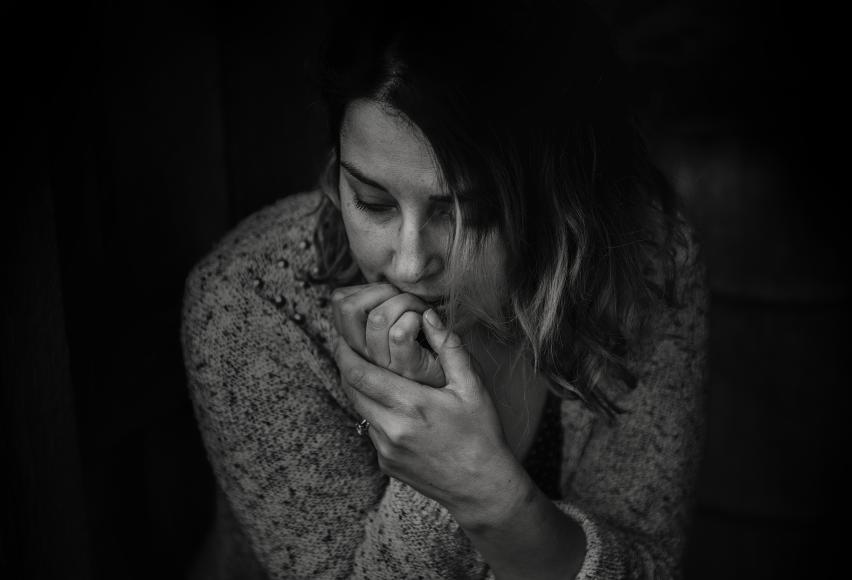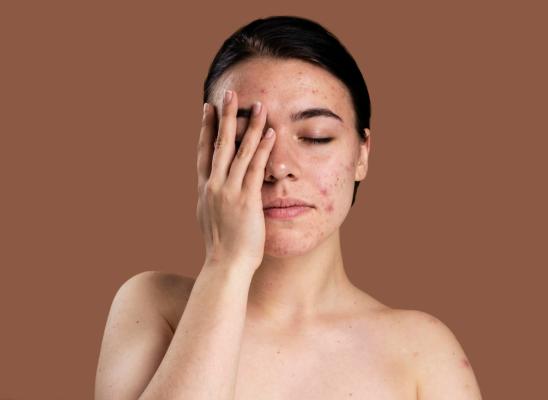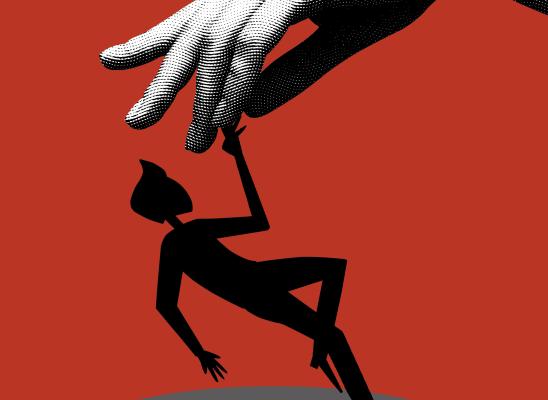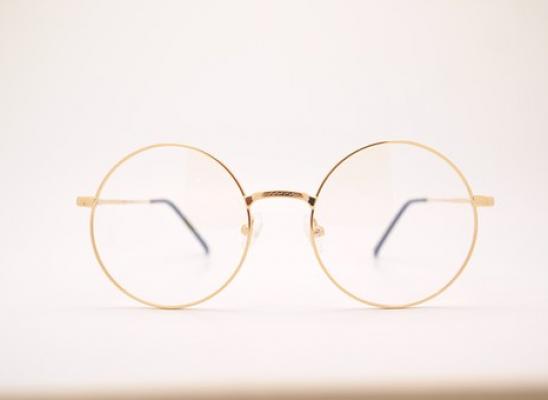Onychophagia: More Than a Nervous Habit

Online test
Find out the severity of your symptoms with this free online test
Onychophagia…it’s a word you’ve probably not heard before, but chances are you or someone you know does it. Onychophagia is the medical term for chronic, repetitive nail-biting, and it’s more common than you might think.
At first glance, nail-biting can seem relatively benign. After all, most of us have had the experience of nibbling a bit too long at a hangnail or nervously chewing on a nail. In fact, some nail-biting is normal, especially in children, and often passed over as just a “nervous habit”. Sometimes, though, for reasons not well-understood, nail-biting becomes repetitive and compulsive, causing skin injury and distress. It has both medical and psychological dimensions.
It’s estimated that about 20-30% of the population engage in nail-biting. It is more common in children and young adults but has been found to persist into adulthood.
Little is known about just how and why chronic nail-biting develops but the impacts are significant. Left untreated, skin infections, dental damage, and interpersonal problems can result from the repetitive nature of nail-biting. What do we know about onychophagia? Are there ways to prevent or treat this condition?
A recently published paper takes a deep dive into the current literature on chronic nail-biting looking for answers.
Defining Onychophagia
Not every instance of nail-biting is considered onychophagia. Most nail-biting behavior dissipates over time. It’s when it doesn’t that the behavior requires a closer look.
Chronic nail-biting is categorized as an obsessive-compulsive related disorder in the Diagnostic and Statistical Manual of Mental Disorders (DSM5). Included in this category of disorders are other body-focused repetitive disorders (BFRBs) including trichotillomania (hair-pulling), excoriation disorder (skin picking), and lip biting. The defining criteria for this disorder are:
- recurrent body-focused repetitive behaviors (in this case, nail-biting)
- repeated attempts to decrease or stop the behaviors
- these symptoms cause clinically significant distress or impairment in social, occupational, or other important areas of functioning
- these symptoms are not better explained by a medical disorder, or another mental health issue such as trichotillomania (hair-pulling disorder), excoriation (skin-picking) disorder, stereotypic movement disorder, or non-suicidal self-injury
Despite being placed in the obsessive-compulsive and related disorders category, nail-biting and other BFRBs are not the same as obsessive-compulsive disorder (OCD). The main difference is that people with a BFRB such as nail-biting are often triggered by some stimulus (e.g., stress, boredom) and the nail-biting relieves their distress. In OCD, the behavior is in response to an obsession or compulsion that does not go away.
If there are skin lesions or infection, the first stop might be the dermatologist rather than a mental health professional. What might look like chronic nail-biting isn’t a response to a medical condition that is causing discomfort. Conditions like nail psoriasis or fungal infections can be mistaken for chronic nail-biting.
If medical or other mental health conditions are ruled out, then chronic nail-biting may be the appropriate diagnosis.
Causes of Onychophagia
The exact causes of nail-biting are not well understood. There is some evidence to suggest that chronic nail-biting may be a pathological continuance of extended bottle-feeding or self-soothing behaviors such as thumb or pacifier sucking. The suckling reflex is necessary for feeding in infancy. Sucking a thumb or pacifier is one of the first self-soothing behaviors a young child develops. These behaviors usually fade over time but may be replaced by nail-biting.
Other possible causes of chronic nail-biting cited in the literature include anxiety and heredity.
Why Getting Help Matters
Aside from just being bothersome, living with a BFRB like chronic nail-biting can lead to a host of physical and emotional issues.
Physical impacts can include:
- Damage to the nail and nailbed
- Infections of the nailbed and surrounding skin
- Infections of the mouth
- Viral infections causing warts or other lesions
Studies have found that dental hygiene is a concerning issue for people with repetitive nail-biting. Broken or damaged teeth, gingivitis, TMJ, and misalignment are a few of the many dental issues that can result.
Emotional impacts can include:
- Interference with quality of life
- Feelings of shame or embarrassment
- Stigma
- Unwanted attention from others
- Disruptions of work or school
- Awkward social situations
Left untreated, chronic nail-biting can result in medical problems and create significant emotional distress. The good news is there are things that can help.
Treating Nail-biting
Because BFRBs like nail-biting are multifaceted, the authors of the paper highlight the need for a multidisciplinary approach to treatment. The treatment team may include primary care physicians, dermatologists, therapists, dentists, psychiatrists, and other professionals as needed. Parent and family participation and support is key to addressing this behavior in children. Teachers and others close to the person may also be included to provide additional support.
The authors stress the importance of an accurate clinical assessment. Children with mild nail-biting tend to outgrow the disorder. There is some evidence that rushing to treat young children can increase attention-seeking behavior via nail-biting.
Treatment modalities can include behavioral therapy or mechanical barriers.
Cognitive behavioral therapy (CBT) is a therapeutic approach that addresses the underlying causes of the behavior and finding positive alternatives to the harmful actions.
Habit Reversal Training (HRT) is the standard treatment for BFRBs. This evidence-based treatment approach focuses on increasing awareness of the behavior (habit) and finding alternative responses. There is some evidence that it can help reduce nail-biting.
Can you prevent nail-biting? Mechanical barriers can deter or even block the act of nail-biting. Some examples with support in the literature include:
- Bitter varnish
- Good nail hygiene (e.g., treating infections, regular manicures, acrylic nails)
- Self-monitoring
- Gum chewing
- Books or other educational resources and support
- Reward system
- Practicing mindfulness
You might be wondering whether medication might be helpful. Medication is generally used as a secondary intervention for treating BFRBs when other issues such as anxiety might be present. The authors caution that certain medications can exacerbate impulsive behaviors and should be carefully considered.
One pharmacological treatment option that has shown some effectiveness with BFRBs including nail-biting is the antioxidant and glutamate modulator N-acetyl cysteine (NAC). The exact mechanism is unknown, but researchers speculate that a reduction of glutamate synaptic release may play a role in decreased nail-biting.
Research continues to contribute to the understanding of BFRBs like nail-biting. What we are learning today will shape the future of BFRB treatment.
If you or a loved one is living with nail-biting, good self-care matters. Wherever you are in your journey, know that mental health services are available, and providers are ready to help.
References
1. Pacan, P., Grzesiak, M., Reich, A., Kantorska-Janiec, M., & Szepietowski, J. (2014). Onychophagia and Onychotillomania: Prevalence, clinical picture and comorbidities. Acta Dermato Venereologica, 94(1), 67-71. doi:10.2340/00015555-1616
2. Winebrake, J. P., Grover, K., Halteh, P., & Lipner, S. R. (2018). Pediatric Onychophagia: A survey-based study of prevalence, etiologies, and Co-morbidities. American Journal of Clinical Dermatology, 19(6), 887-891. doi:10.1007/s40257-018-0386-1
3. Halteh, P., Scher, R. K., & Lipner, S. R. (2016). Onychophagia: A nail-biting conundrum for physicians. Journal of Dermatological Treatment, 28(2), 166-172. doi:10.1080/09546634.2016.1200711
4. Baghchechi, M., Pelletier, J. L., & Jacob, S. E. (2021). Art of prevention: The importance of tackling the nail biting habit. International Journal of Women's Dermatology, 7(3), 309-313. doi:10.1016/j.ijwd.2020.09.008
5. Obsessive Compulsive and Related Disorders. (2013). Diagnostic and Statistical Manual of Mental Disorders, 5th Edition. Retrieved from https://doi.org/10.1176/appi.books.9780890425596.dsm06
6. Sabuncuoglu, O., Orengul, C., Bikmazer, A., & Kaynar, S. Y. (2014). Breastfeeding and Parafunctional oral habits in children with and without attention-deficit/Hyperactivity disorder. Breastfeeding Medicine, 9(5), 244-250. doi:10.1089/bfm.2014.0014
7. Tanaka, O. M., Vitral, R. W., Tanaka, G. Y., Guerrero, A. P., & Camargo, E. S. (2008). Nailbiting, or onychophagia: A special habit. American Journal of Orthodontics and Dentofacial Orthopedics, 134(2), 305-308. doi:10.1016/j.ajodo.2006.06.023
8. Ooki, S. (2005). Genetic and Environmental Influences on Finger-Sucking and Nail-Biting in Japanese Twin Children. Twin Research and Human Genetics, 8(4), 320-327. doi:10.1375/twin.8.4.320
9. Twohig, M. P., Woods, D. W., Marcks, B. A., & Teng, E. J. (2003). Evaluating the efficacy of habit reversal. The Journal of Clinical Psychiatry, 64(1), 40-48. doi:10.4088/jcp.v64n0109
Online test
Find out the severity of your symptoms with this free online test
Start your journey with SkinPick
Take control of your life and find freedom from skin picking through professional therapy and evidence-based behavioral techniques.
Start Now



